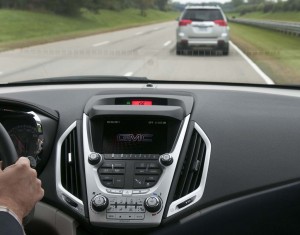
New collision avoidance systems appear to be having a significant payoff in terms of reduced insurance claims, says a new study.
While it’s likely to be a number of years before fully autonomous vehicles start rolling onto the nation’s highways the latest crash avoidance technologies – including autonomous braking systems – are having a major impact, according to a new study that finds they result in significantly fewer crashes, injuries and fatalities.
The new report by the Highway Loss Data Institute (HLDI) reveals that forward collision avoidance systems – especially those that can begin to brake even before the driver is aware of a problem – and adaptive lighting systems are delivering the biggest benefits.
But not all the new crash-avoidance technologies are proving equally effective. There’s no clear evidence that blind spot detection and park assist systems have a measurable effect. And Lane Departure Warning technology “appears to hurt, rather than help,” the new report cautions.
As more automakers offer advanced technologies on their vehicles, insurance data provide an early glimpse of how these features perform in the real world,” says Matt Moore, vice president of HLDI, an affiliate of the Insurance Institute for Highway Safety (IIHS). “So far, forward collision technology is reducing claims, particularly for damage to other vehicles, and adaptive headlights are having an even bigger impact than we had anticipated.”
Analysts for the insurance industry research organization looked at how each new collision avoidance feature affected claim frequency for vehicles produced between model-years 2000 and 2011, depending upon when the technologies were first introduced.
Experts caution, however, that such research can be misleading, especially early on. It can take time for makers to work out the bugs in new technologies – and for motorists to become both familiar with and comfortable using new technologies. In the early years of active safety technology – systems designed to intervene to prevent a collision rather than simply reduce the impact of an accident, such as airbags – there were problems with a number of devices now considered essential.
Early data appeared to show that anti-lock brake systems were resulting in an increased number of collisions. Yet today, ABS is not only mandated by federal law but serves as the base technology for more advanced systems such as autonomous braking.
But there is enough evidence that HLDI found a 14% lower rate of claims for Acura and Mercedes-Benz vehicles equipped with forward collision warning with autonomous braking when compared to otherwise identical vehicles not equipped with such systems.
“Mercedes and Volvo also offer versions of forward collision warning that don’t include autonomous braking,” a summary of the study notes. “These appeared to lower crash rates, too, but not to the same extent as versions that do include it.”
Meanwhile, HLDI found a clear pay-off when it examined the effectiveness of adaptive headlights on Acura, Mazda, Mercedes and Volvo vehicles – a drop in claims of as much as 10%. Adaptive headlights use factors such as the speed of a vehicle and the angle of the steering wheel to help aim headlamps so a driver can see around a corner.
“Injury claims of all types, both for injuries to occupants of the insured vehicles and to other road users, fell substantially for all but one make,” says the report.
Perhaps the biggest surprise of the study was the increased insurance claim rate associated with Lane Departure Warning technology. HLDI stressed that the increase was “statistically insignificant,” but suggests that this feature does not appear to be having the desired effect.
Those results will likely be re-examined and debated. The Insurance Institute for Highway Safety, another trade group associated with HLDI, previously forecast that lane departure systems could eliminate or at least mitigate up to 7,259 fatal crashes annually.
“Lane departure warning may end up saving lives down the road, but so far these particular versions aren’t preventing insurance claims,” Moore says. “It may be that drivers are getting too many false alarms, which could make them tune out the warnings or turn them off completely. Of course, that doesn’t explain why the systems seem to increase claim rates, but we need to gather more data to see if that’s truly happening.”
As with early ABS systems, researchers suggest that the industry will have to examine the way Lane Departure Warning systems operate. The first anti-lock brake devices often tried to warn the driver of an impending skid by violently pulsing the steering wheel, but evidence indicated motorists often responded by lifting off the brake when that happened.
With Lane Departure warning it may take some significant changes in the way the technology alerts a motorist – or perhaps the use of more automated systems. Cadillac has forgone the typical lights and buzzers with its new XTS and ATS models. It alerts motorists to problems – such as drifting out of one’s lane – by shaking the vehicle’s seat in the direction of the problem. Some Lexus products, meanwhile, actually help nudge a vehicle back into its lane.
“Just as forward collision warning systems that include autonomous braking cut crashes more sharply than those that don’t, lane departure prevention systems that don’t rely on a driver’s response may hold more promise than the systems HLDI has looked at so far,” says David Zuby, chief research officer at IIHS.
